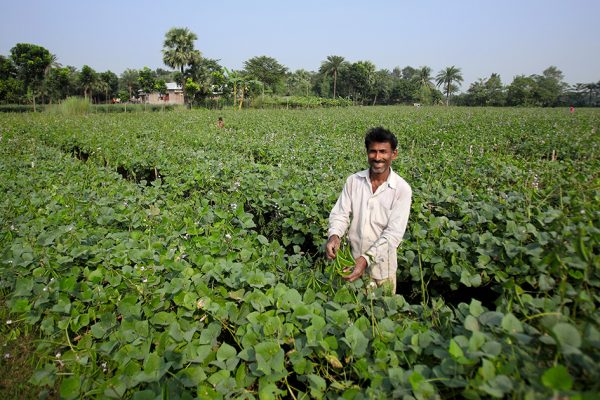Drawing the line: AusAID visits BRAC’s Ultra Poor program
Reading Time: 3 minutes
The following article was written by Shaheen Mahmud & Leda Isis Tyrrel of AusAID Bangladesh and published in the Feb-May 2010 issue of Focus.We leave the city in the early morning. The air is already thick and hot. As the city recedes the roads become smaller. Vibrant green rice paddies line either side. Rickshaws and carts stacked high with goods are pushed to market. After a couple of hours we stop and refuel with sweet tea and biscuits.
The following article was written by Shaheen Mahmud & Leda Isis Tyrrel of AusAID Bangladesh and published in the Feb-May 2010 issue of Focus.We leave the city in the early morning. The air is already thick and hot. As the city recedes the roads become smaller. Vibrant green rice paddies line either side. Rickshaws and carts stacked high with goods are pushed to market. After a couple of hours we stop and refuel with sweet tea and biscuits.
Verging off the main road, we travel along a path built precariously on flood embankments. As we arrive in the village children crowd around the car. ‘Hello, what is your name?’ call the bolder ones, trying their best English. Others hide, stealing shy glances and giggling. One boy, a younger child perched on his hip, says he is twelve. He looks much younger. UNICEF estimates seven million children are chronically malnourished in Bangladesh and one in three children under five are stunted.
We meet Safura. She smiles and leads us to her house and a small plot of land where she is cultivating vegetables. Two years ago she was identifi ed as ‘extreme poor’. Staff from the large Bangladeshi organisation BRAC (formerly Bangladesh Rural Advancement Committee) drew a map of her village on the ground and undertook surveys of the individual households to identify the poorest families, she explains to us.
Before joining BRAC’s program Safura spent almost all of her small income on food and still only provided two meals a day—predominately rice—to her family. Her daughter did not go to school. They had no house or land and squatted in a makeshift hut on the edge of the river. Each year the hut was inundated by flood water and her daughter often got sick. Over 80 per cent of Bangladesh’s population of 150 million live on less than $2 a day. Over 30 million (20 per cent) are ‘extreme poor’ like Safura.
Over two years Safura received support from BRAC including seeds, fertiliser, lease of a small plot of land, and skills training in gardening and rearing livestock. She also received a daily stipend and access to subsidised healthcare. A village committee provided social support to her and lobbied for services on her behalf.
In development we talk a lot about lines—being above or below various poverty lines—but in reality things are not always that linear. The change in Safura’s life can be measured across a range of indicators—her health has improved along with her daily food intake, nutrition, her safety and security. But the most
profound change can be measured by her interaction and confidence. She shows us proudly her two cows which she has raised, the new iron on her roof and her ability to write her own name.
For the first time in her life, she has been invited to a wedding of one of the other families in the village. This is an invisible line that can be harder to cross. She tells us she could never imagine that her life could have changed to such a degree—to be able to send her daughter to school, and to save and think of the future.
In Australia we would expect these things as a matter of course. We don’t think twice about making a quick stop on the way home to buy something for dinner, or our capacity to educate our children or plan for the future.
We thank Safura and leave her village followed by children until we join the main road again. After driving back into the city, we finally hit the urban sprawl. Crossing the railway line, we pass rusty corrugated iron and tarpaulins wedged between the railway line and the road. A group of small children plays in the dust. Over 200,000 people live within a 1km square area in Dhaka’s slums. Bangladesh’s urban population is projected to reach an ominous 51 million by 2015. Urban poverty is the new frontier. How do you provide support to the poor who have no land or fixed place to live?
Still, thinking of Safura and the resilience of others like her, with the right support the potential is enormous. It comes down to the question of where we draw the line.





